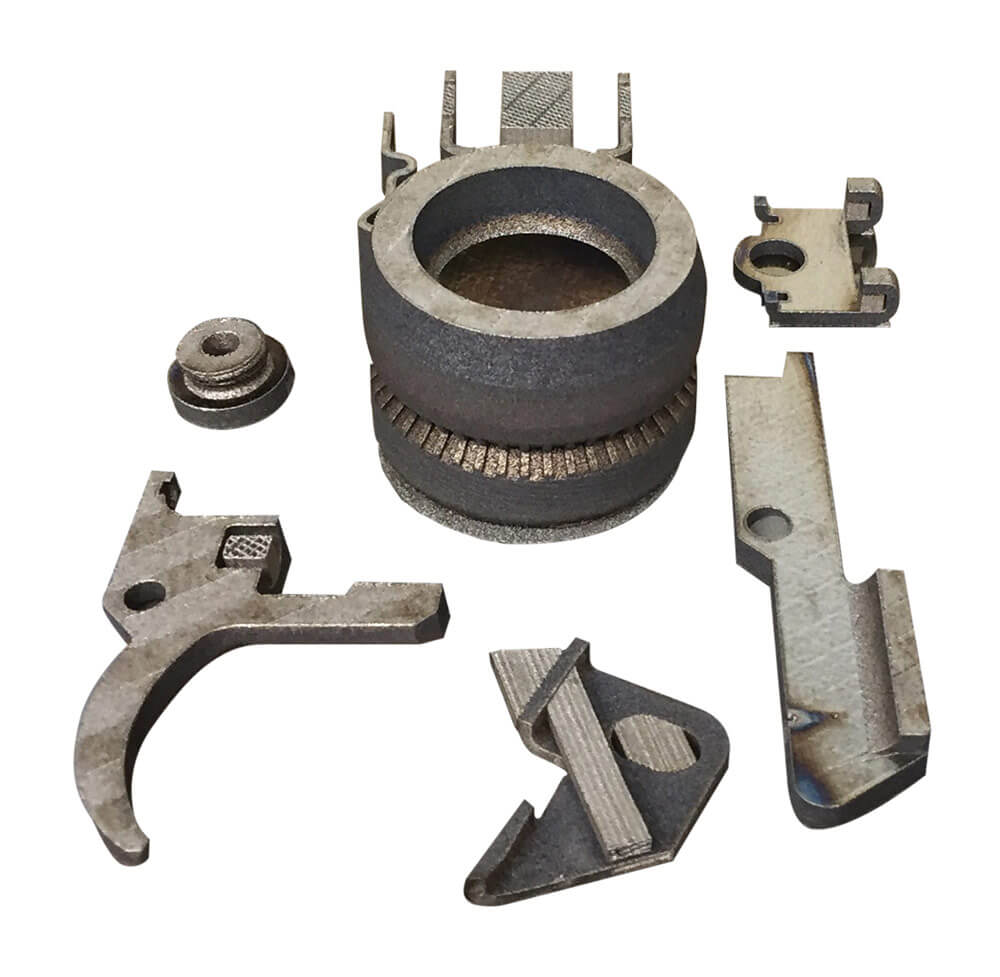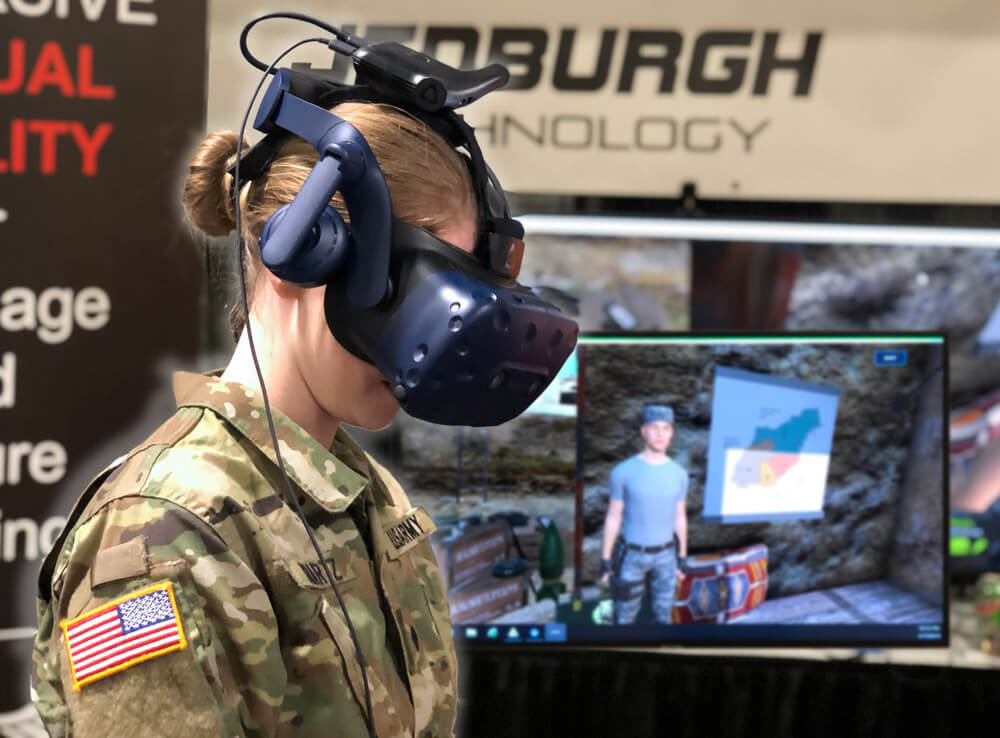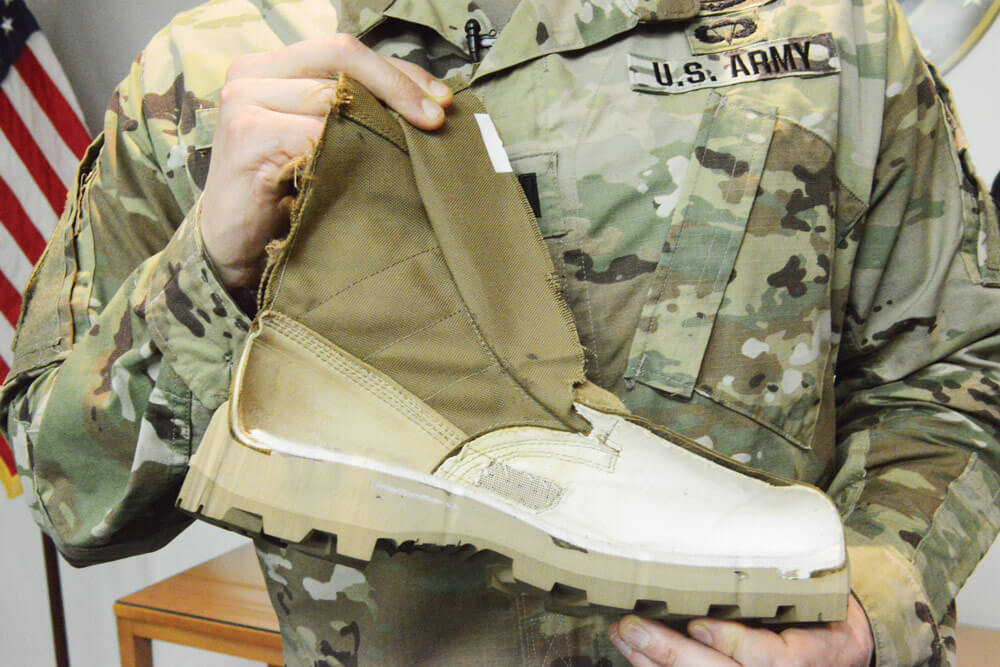3D Printed Grenade Launcher Paves the Way for New Manufacturing Technique
No longer just the stuff of the future, 3D printing has joined the ranks of bona fide manufacturing methods. The legitimacy of the new-age process is evidenced by the $13.2 billion the Subcommittee on Emerging Threats and Capabilities proposed be allocated to 3D printing as part of the 2018 National Defense Authorization Act, according to reports on the proposed version of the budget plan.
3D printing, officially known as additive manufacturing (AM), is the process of creating three-dimensional objects using a machine that lays down successive layers of material, one thin slice at a time. Following a digital blueprint – secured blueprints that require security clearance to access for Army materials – the slices mold together to form solid objects. It can be thought of as baking in reverse – instead of baking a whole cake and then slicing it into pieces, AM starts with the slices and compiles them into a cake.

AM has never been as valuable in training and prototype development as it is today. Advances in the technology now allow for the printing of almost any object, using a multitude of materials.
These advances were showcased last spring when scientists and engineers at the U.S. Army Armament Research, Development and Engineering Center (ARDEC) manufactured and fired their very own RAMBO. No – not the lethal Soldier from the 1980s hit movie series. RAMBO (Rapid Additively Manufactured Ballistics Ordnance) is a 3D-printed grenade launcher that represents the culmination of a six-month collaboration led by ARDEC between the U.S. Army Research, Development and Engineering Command, the U.S. Army Manufacturing Technology Program and America Makes – the Nation’s leading public-private partnership in additive manufacturing.
The grenade launcher was modeled after the M203, and the accompanying 3D-printed grenade was modeled after the M781 training round.
The ability to print, and then immediately use a weapon is a huge step forward in the effort to decrease the time it takes engineers to research, develop and manufacture armaments. RAMBO only took 35 hours to print – creating over 90 percent of its parts using AM, excluding only the springs and fasteners. In all, more than 50 parts were additively manufactured to create the grenade launcher.
“For prototyping purposes, there’s a lot of advantages to additive manufacturing,” explained Sunny Burns, materials engineer for ARDEC at the Picatinny Arsenal in Wharton, New Jersey. “Additive manufacturing can potentially allow researchers to build prototypes in days, as opposed to months. This will expedite the acquisition process, allowing engineers to get equipment to warfighters more quickly.”
Creating prototypes with 3D printing also allows design changes to happen almost on the fly. As problems are detected, fixes can be adapted, printed and then tested in mere hours. The ability to quickly change designs will be especially helpful for the creation of barrels. Rifling a barrel requires complex tooling and machining expertise. Burns explained that this tooling is costly and requires a unique skill set for proper execution. While engineering expertise is certainly required to operate the advanced equipment that makes up the 3D printers, it is a broader-based expertise that applies to a larger segment of the engineering staff. Burns added that only one of the 30 machinists at the Picatinny machine shop has experience rifling barrels.
“Just the tooling alone takes around $50,000,” Burns said. “If you’re just doing a one-off prototype, or [producing] under 10, 3D printing is definitely the way to go.
Though the printing of the M781 training round encompassed four different AM printing techniques, those techniques did not involve energetics – the explosives, propellants and pyrotechnics needed to fire and propel ammunition forward. Those were added at the test area prior to firing.
“With additional funding, we would like to develop the round further and include something with printed energetics – something that would go boom. That would be the next iteration of the project,” Burns said.
As 3D printers are now capable of printing in a wide variety of materials, the engineers at ARDEC strove to print the components using the same materials as the original grenade launcher and round.
“We’ve tried to stay as much one-to-one as possible,” Burns noted. “If a part was aluminum, we didn’t want to print in steel – we wanted to print in aluminum. Same thing for the round; we tried to stay as close as possible.”
Though the engineers endeavored to print with materials matching the original objects, that was not always possible and, due to constraints of the printer, this caused a couple of snags along the way.
“The typical grenade training round has a plastic cartridge case and windshield, made of glass-reinforced nylon 6. We were not able to print this material, so we printed it in other plastics, which began cracking during firing.”
The engineers were forced to alter the round’s design. They overcame the problem by adding gussets and reinforcing certain areas on the round. In the past, this process would have taken days or weeks. Now, engineers only had to print a new one.
The successful test firing of RAMBO validated AM’s applicability in the production of armaments.
“Designs and parts previously unachievable can now be realized. Complex geometric designs to lighten, simplify and optimize armaments are feasible and manufacturable. These advancements will improve products and facilitate faster and more efficient transition from the labs to the field, further enabling our warfighters,” Burns reflected.
“We decided to use the grenade launcher as the platform, but we could have used almost any weapon. We wanted to demonstrate that additive processes are applicable to armament systems,” said Jim Zunino, another materials engineer and colleague to Burns at ARDEC.
“The idea is to incorporate 3D printing into the manufacturing process where it makes sense and combine it with conventional manufacturing. We’re trying to explore what other techniques are out there that could be complementary to current and future weapon system production,” Zunino said.
Zunino went on to explain that AM can allow for mass customization. For instance, standard weapon parts could be printed using conventional methods, but the finger grooves or buttstock could be 3D-printed and customized to accommodate for an individual Soldier’s height, weight and hand grip.
“Some Soldiers like a 45-degree grip handle in the front on their rifle and some like a 90-degree grip handle in the front. With additive manufacturing, we could potentially [offer a range of customizations],” Zunino said.
With lofty goals for the future, the ARDEC engineers are hoping to one day provide forward-deployed teams “expeditionary kits” that would allow them to 3D print spare or customized parts.
“You’re not going to be able to make a grenade launcher in one of the expeditionary kits, but if you want an additional Picatinny rail or grip, we want to be able to give them that ability,” he said.
Time will tell how 3D printing will change the development of armaments and the speed at which designs go from the engineers to the Soldiers, but this test demonstrated that 3D printing has an established place in the creation of tools to aid the warfighter.
By STAFF WRITER Keegan Rammel



